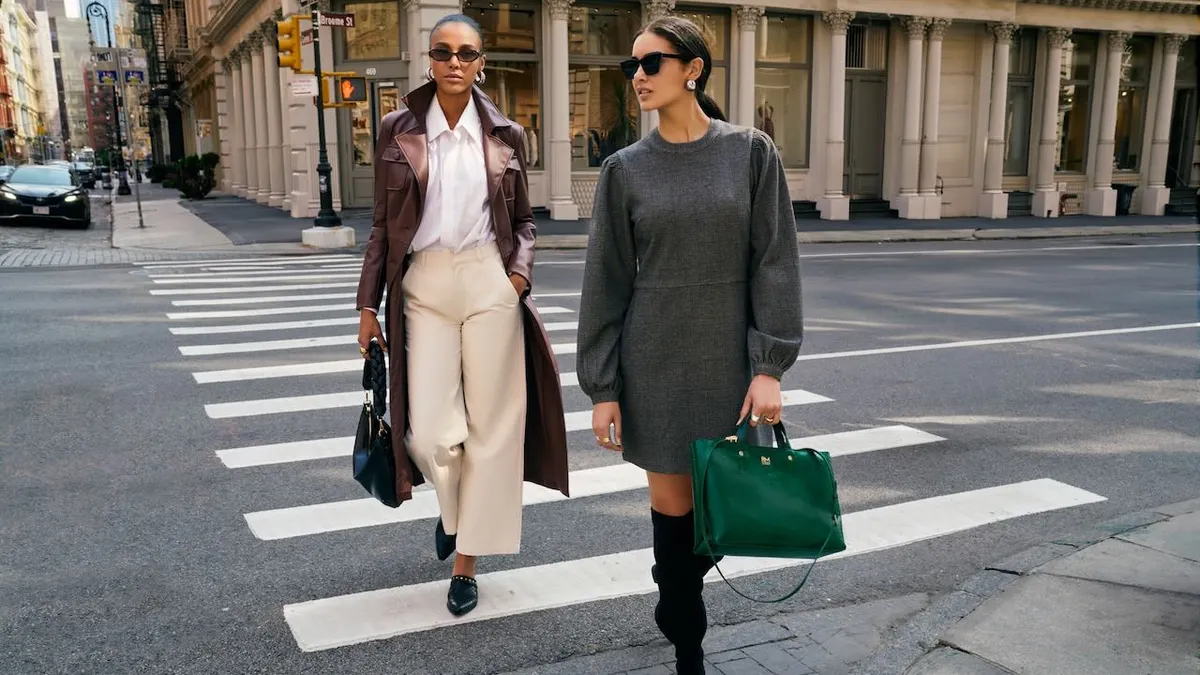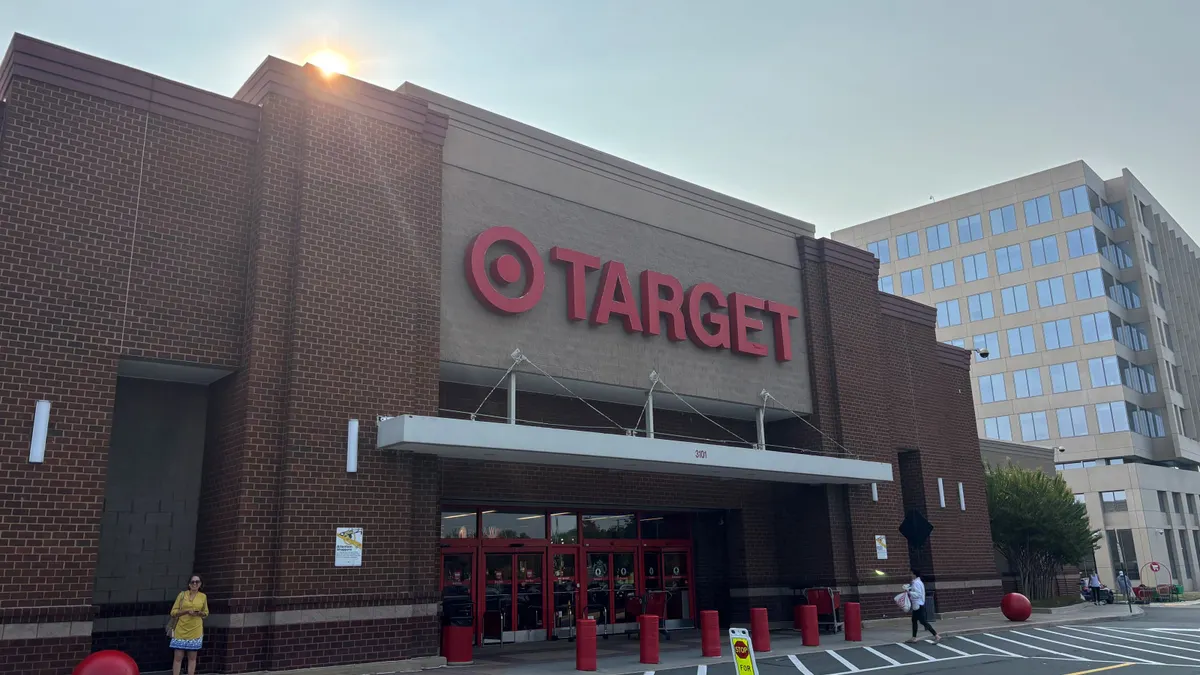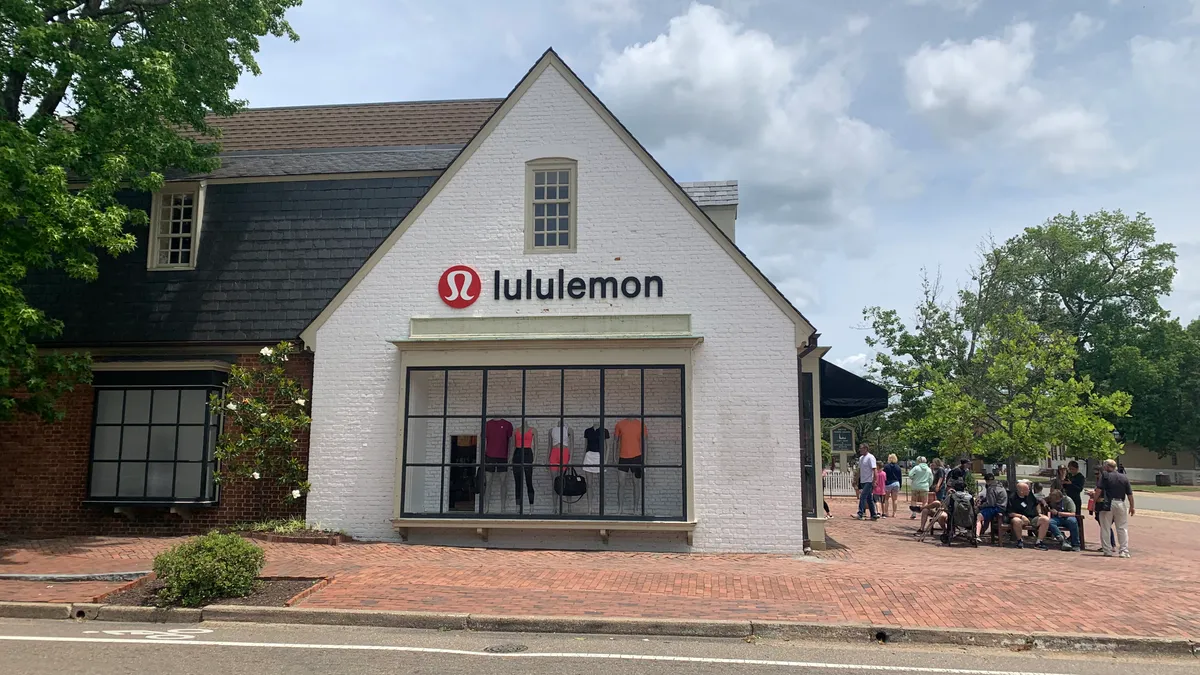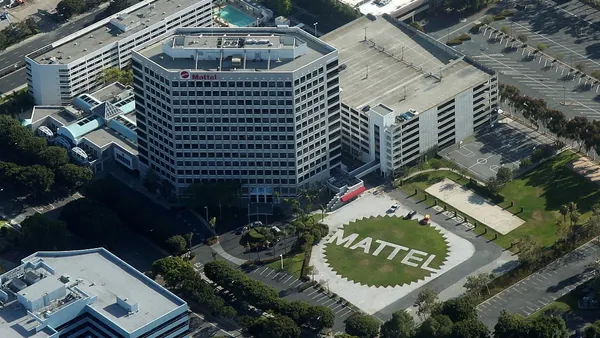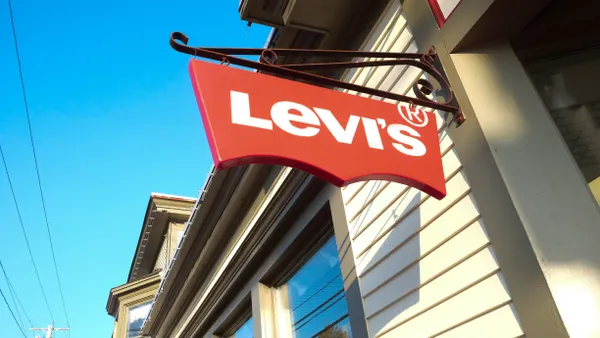Dive Brief:
-
RM Rebecca Minkoff, a more affordable label from the designer, is now available only at J.C. Penney’s website and some stores, the department store announced Tuesday.
-
Earlier this month, QVC announced an exclusive capsule collection dubbed RM Studio x Rebecca Minkoff. In both releases the designer, who shifted to a licensing model in July, emphasized an effort to offer accessible fashion.
-
J.C. Penney’s line features 85 pieces — including shrunken pea coats, pleather bombers, fringe jackets, blouses, skirts, wide-leg denim and boots — starting at $40.
Dive Insight:
J.C. Penney said its RM Rebecca Minkoff pieces “give ‘It’s from where?’ vibes” — a nod to the marketing push that debuted in the spring — and likened them to “ a sample sale score.”
The assortment gives customers another reason to shop at Penney, Brand Chief Executive Officer Michelle Wlazlo said in a statement Tuesday. The department store also announced an exclusive Bob Mackie collection earlier this month.
“True insiders know great fashion shouldn’t be a secret, and it certainly isn’t defined by the price tag,” Wlazlo said. “This launch makes elevated designer style more accessible than ever, whether you’re running errands or running the world. If you know you know, and now, everyone can.”
The collection was designed with busy moms in mind, women who want to express their individuality via fashion, according to Minkoff’s statement.
“Motherhood has shaped not only who I am, but also how I design,” she said. “With my RM Rebecca Minkoff line, I want women to feel powerful and effortless as they move through all the roles they juggle. Partnering with JCPenney makes this even more meaningful — their commitment to accessibility in fashion mirrors my own.”
RM by Rebecca Minkoff is a full diffusion brand with apparel, shoes and handbags, sold exclusively at J.C. Penney, while the RM Studio collection at QVC is “apparel only designed for the QVC customer, with QVC sizing and fit specs,” Minkoff told Retail Dive by email.
“QVC and JCP are different offerings at different price points for different customers and we are so excited to be able to offer BOTH,” she said.
For two years now the department store has centered its turnaround on appealing to U.S. families on a budget, but it’s been an uphill climb. Last year total net sales, not including credit cards, fell 8.6% to $6.3 billion. The company swung to a $177 million loss, from $30 million in net income the prior year.
Its marketing efforts seemed to pay off somewhat in Q1, however, as declines where less sharp.



